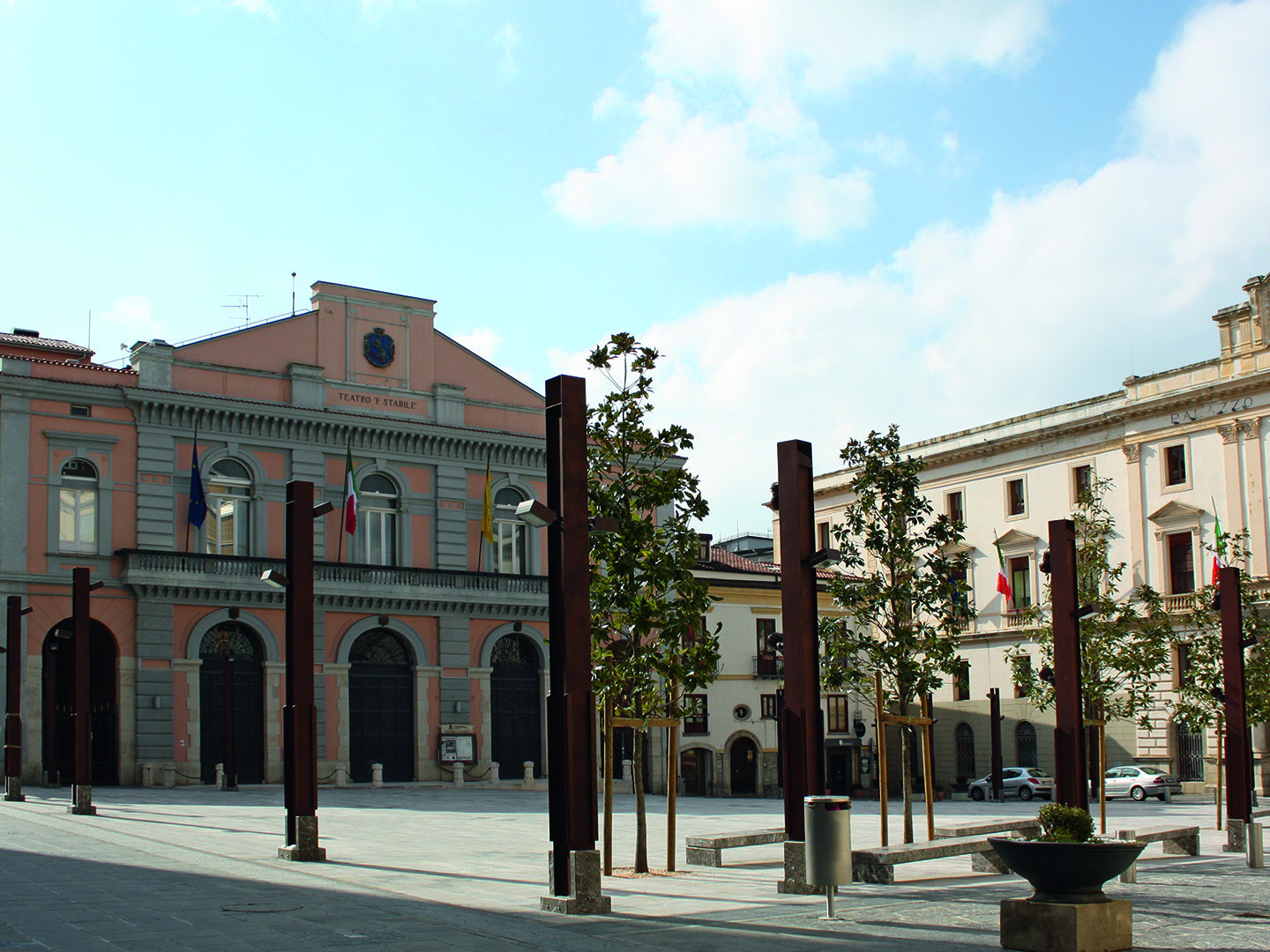Itinerary "In the historic centre of Potenza | in the footsteps of Saint Gerard, among the voices of a wise architecture"
Potenza Tour
Dedicating a day to visit the Lucanian capital can be a very interesting experience, a real journey back in time to the heart of the historic centre where, moving on foot, you can follow the footsteps of the patron saint of Potenza. A journey that, between legend and history, between the architecture of the past and today’s innovations, leaves plenty of opportunity for wonder and discovery, curiosity and knowledge.
Entering the centre from the side of Porta Salza, a location whose name derives from the presence of the main entrance gate (demolished at the beginning of the 19th century) to the medieval city, you can’t help but visit the narrow streets that intersect the main street, Via Pretoria, scattered with references to the ancient medieval village. Squat buildings alternate with noble palaces and modern structures. Narrow alleys follow one another, parallel, crossed, dead-end or communicating, in grey stone, with the wood of the doors of the past and adorned with coloured flowers that overlook from balconies and windowsills. Characteristic public fountains and noble coats of arms intensify the atmosphere of the typical alleys of this area, contained in that perimeter marked by the ancient gates (some still visible: Porta San Luca, Porta San Gerardo and Porta San Giovanni), once the only access to the area within the walls. Fragments of history that make the corners of the centre unique, emanating a sense of warmth and authenticity.
The historic centre is dotted with several sacred places, emblems of the past from which the city we know today emerged: the Church of Santa Lucia, that of San Michele, the Cathedral of San Gerardo and the Church of San Francesco are examples of important, symbolic and eloquent architecture, accompanied by the presence of interesting artistic works:
The first, the Church of Santa Lucia, of medieval origin, stands surrounded by the hovels of the ancient village and preserves a splendid nineteenth-century statue of the local artist Busciolano and various decorative elements worth seeing in person, such as the heraldic coat of arms dating back to 1586.
The church dedicated to San Michele Arcangelo, dating back to 1178 and custodian of works of art such as the “Annunciation” (1612) by Pietrafesa and “Madonna of the Rosary and fifteen mysteries” (1569) is a masterpiece of Romanesque art. by Antonio Stabile.
Imposing, with a soaring bell tower and a façade dominated by a precious bronze door sculpted by the Calabrian Niglia in 1968 and depicting the most significant events in the history of Potenza, the Cathedral of San Gerardo encloses a highly evocative atmosphere within its walls, offered by elements such as a series of Baroque frescoes and oils on panel, the sarcophagus containing the remains of the Saint or the impressive crypt datable between the 4th and 6th centuries BC with the function of “Martyrion”, a place used to preserve the bodies of martyrs.
Behind the Cathedral stands the Diocesan Museum, where you can admire precious objects, valuable examples of art and faith as well as a rich collection of furnishings from the Cathedral.
The Church of San Francesco is one of the oldest in the city, dating back to the 11th century, its simplicity and architectural sobriety fully reflecting the type of religiosity by which it is inspired. Noteworthy are the works housed inside, such as “The Martyrdom of Saint Sebastian” by Giovanni Todisco.
Continuing along the route, you arrive at Piazza Matteotti, overlooked by the town hall and a small sacred building, the Tempietto di San Gerardo temple. A milestone of the Potenza walk, and originally a snow house, it protects a Neo-Renaissance style bust depicting the Saint between its columns topped by a singular dome.
In one of the alleys adjacent to Via Pretoria there is another noteworthy place of worship hidden and covered with red bricks, the Beato Bonaventura Chapel, the birthplace of friar Bonaventura, sanctified by Pope Pius VI in 1775.
For lovers of figurative art, it is worth visiting the Civic Gallery, to which the rooms of the Celestini Chapel are annexed, both housed in one of the most important noble palaces in the city: Palazzo Loffredo, formerly the venue of the Dinu Adamesteanu National Archaeological Museum. Here unique exhibitions of Italian and European authors can be visited every year. Opposite, and recently opened to the public, is the “Palace of culture”, a place dedicated to hosting events and exhibitions and the seat of the municipal tourist information point.
Between one visit and another, a stop at the meeting place of Potenza, Piazza Mario Pagano, is highly recommended, made even more pleasant by enjoying a rich aperitif at one of the bars overlooking the square. The historic F. Stabile theatre, a jewel in the centre of Potenza and the oldest and most prestigious theatre in Basilicata, overlooks this large space.
Walking along the central road to the end, you reach another significant historical element of the city: the Guevara Tower, what remains of the majestic castle of the same name.
And after this journey through the history and architecture of the capital, you can taste something authentic and local in the many cozy little restaurants and historic trattorias in the historic centre. A riot of flavours and colours that illustrates the Lucanian food and wine tradition: meats and cheeses accompanied by grilled vegetables lead the way to a varied offer of typical dishes. From the tempting cruschi peppers, which enrich the first courses of homemade pasta accompanied by fried breadcrumbs, to the tasty meat sauces that flavour ravioli stuffed with fresh ricotta, to the grilled meat that is the star of the main courses, followed by desserts of various kinds and locally produced bitters.























